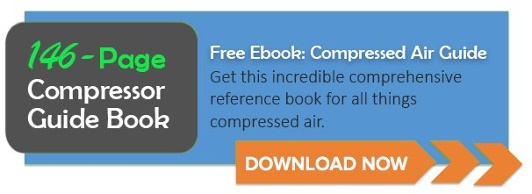- News and media
- About Atlas Copco
- Work with us
- Our complete offering
- Air compressor products, parts and service
- Air compressor industrial solutions
- Air dryers
- Air filters
- Air receivers and aftercoolers
- Gas compressors
- Gas generator
- Industrial condensate treatment solutions range
- Marine compressors
- Mobility compressors
- Oil-free air and nitrogen boosters
- Oil-free air blowers
- Process filters
- Process gas and air equipment
- Service and parts
- Used air compressors
- Vacuum pumps and abatement
- Industrial tools and solutions
- Air motors
- Assembly tools and solutions
- Articulated arms
- Controller floor stands & frames
- Customized solutions with Geared Front Attachment
- Electric assembly systems
- Electric assembly tools
- Error proofing solutions
- Fixtured assembly solutions
- Manual torque wrenches
- Mobile fixtured solutions
- Pneumatic assembly tools
- Quality assurance in tightening
- Torque reaction suspension & rail systems
- Workplace solutions & automation
- Workstation solutions
- Bolting solutions
- Drills
- Joining solutions
- Material removal tools
- Service
- 24/7 rental solutions
- Portable equipment
- Sustainable innovations virtual showroom
- Air compressor products, parts and service



Understanding Different Types of Positive Displacement Compressors
Download our free
and comprehensive
compressed air
manual
A general rule of thumb states that positive displacement compressors are best suited for base load requirements. So how do they work? Positive displacement compressors draw air into one or more of their compression chambers. As the volume of each chamber decreases through the displacement of one or more moving parts, pressure increases.
Today, we’ll take a look at different types of compressors that use positive displacement compression.
Piston Compressors
The piston compressor is the oldest and most common type of industrial compressor. It’s available in single-acting or double-acting, oil-lubricated or oil-free variants, with various numbers of cylinders in different configurations.
Oil-free piston compressors have piston rings made of polytetrafluoroethylene (PTFE) or carbon. Alternatively, the piston and cylinder wall can be profiled as on labyrinth compressors. Larger machines are equipped with a crosshead and seals on the gudgeon pins, and a ventilated intermediate piece to prevent oil from being transferred from the crankcase into the compression chamber. Smaller compressors often have a crankcase with bearings that are permanently sealed.
Rotary Screw Compressors
Developed in the 1930s, rotating displacement compressors in twin screw form have two main parts — the male and female rotors, which rotate in opposite directions while the volume between them and the housing decreases. Each screw element has a fixed, built-in pressure ratio that is dependent on its length, the pitch of the screw and the form of the discharge port. To attain maximum efficiency, the built-in pressure ratio must be adapted to the required working pressure.
Modern oil-free screw compressors have asymmetric screw profiles that reduce internal leakage and improve energy efficiency. Their external gears are most often used to synchronize the position of the counter-rotating rotors. Because the rotors never come in contact with one another, no lubrication is required in the compression chamber and the compressed air produced is completely oil-free.
Liquid-injected screw compressors use liquid lubrication in their compression chamber and often with their compressor bearings as well. The liquid cools and lubricates the compressor element’s moving parts, which cools the air being compressed and reduces the return leakage to the inlet. Today, oil is the most commonly used liquid due to its good lubricating and sealing properties. Other liquids used include water.
Tooth Compressors
Tooth compressors contain two rotors that rotate in opposite directions inside a compression chamber. Its compression process consists of intake, compression and outlet phases. During the intake phase, air is drawn into the compression chamber until the rotors block the inlet. The air is then compressed in the compression chamber, which gets smaller as the rotors rotate during the compression phase. In its final phase, the outlet port is blocked during compression by one of the rotors while the inlet is open to draw in new air into the opposite section of the compression chamber.
Scroll Compressors
A scroll compressor is usually a type of oil-free orbiting displacement compressor, which compresses a specific amount of air into a continuously decreasing volume. The compressor element consists of a stator spiral fixed in a housing and motor-driven eccentric, orbiting spiral. The spirals are mounted with 180° phase displacement to form air pockets with a gradually varying volume, which provides the scroll elements with radial stability. When the orbiting spiral moves, air is drawn in and captured in one of the air pockets, where it is gradually compressed as it moves toward the center.
Vane Compressors
Most vane compressors are oil-lubricated and operate using the same principle as many compressed air expansion motors. A rotor with radial, movable blade-shaped vanes is eccentrically mounted in a stator housing. When it rotates, the vanes are pressed against the stator walls by centrifugal force. Air is drawn in while the distance between the rotor and stator increases. The air is captured in the different compressor pockets, and decreases in volume with rotation and is later discharged when the vanes pass the outlet port.
Roots Blowers
A Roots blower is a valve-less displacement compressor without internal compression. When the compression chamber comes in contact with the outlet port, compressed air flows back into the housing from the pressure side. Subsequently, further compression takes place when the volume of the compression chamber further decreases with continued rotation. Accordingly, compression takes place against full counter-pressure, which results in low efficiency and a high noise level. Roots blowers are frequently used as vacuum pumps and for pneumatic conveyance in low pressure applications.
Finding the right positive displacement compressor for your needs can be complicated, but Atlas Copco is here to help. Just send us a message on our Contact Us page, and an expert will point you in the right direction.






